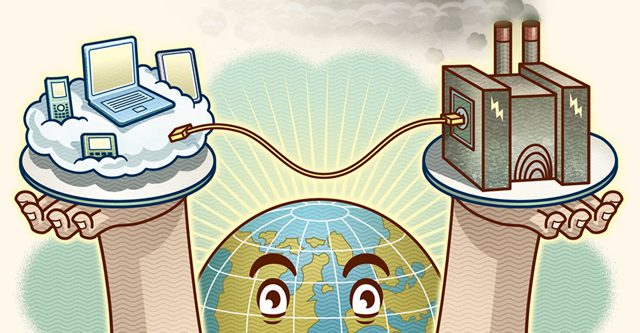sierraclub.org - sierra magazine - sept/oct 2011 - grapple: as the world warms
Watershed Moment | The Fire Next Time | Blue Period | As the World Warms | Woe is Us |
Bare New World | Up to Speed
AS THE WORLD WARMS
Quick thinking before we slowly fry
The triple meltdown at the Fukushima Daiichi nuclear power plant has shaken the world's energy landscape, making renewables hotter than Reactor 2's spent- fuel pool. Japan may abandon its plans to get half its energy from nuclear power and is accelerating its investment in renewables and conservation; one proposal is to require solar panels on all new construction. Germany, Switzerland, and Italy are saying nein, non, and no to nukes, and here in the United States, renewables now account for as much primary power production as do nuclear reactors—11 percent of the nation's total.
Teenagers have some wacky ideas about climate change—44 percent of them think the problem could be solved if rockets stopped punching holes in the ozone layer—but in some respects they know more than their elders. A Yale University poll found that 77 percent of teens know what the greenhouse effect is, compared with 66 percent of adults. Better yet, 57 percent of youths understand that humans are causing global warming, while half of adults could use remedial education on the subject.
A problem with wind power is that when it's windy, you've got lots of juice, sometimes more than you need; when it's calm, you don't have any. Now Duke Energy and a start-up called Xtreme Power are joining forces at the Notrees wind farm in West Texas to build a very large array of batteries that can store some 20 percent of the farm's windy watts. Scheduled to be charging by the end of 2012, the 36-megawatt array will be one of the largest in the world. —Dashka Slater

Peter and Maria Hoey
ON THE ONE HAND . . .
Cloud computing can trim your environmental footprint in all sorts of ways—reducing paper printouts, giving you up-to-the-minute feedback on your electricity use, and letting you work at home in your jammies instead of driving to the office or flying to far-off meetings. A wired world also means less stuff: As we replace physical objects like books, DVDs, and photographs with digital and streaming versions, we use fewer resources to make and ship them.
ON THE OTHER . . .
Cloud computing doesn't actually live in the clouds. It lives in immense data centers that are responsible for 3 percent of U.S. power use, and whose hunger for electricity grows by 12 percent each year. These data centers are clustered in places like North Carolina and the Midwest, where electricity is cheap—and dirty. Apple and Facebook get about half their power from coal, and even Google, a leader on climate issues, is 35 percent coal-powered.—D.S.
Woe Is Us